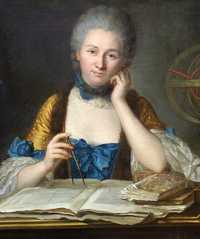The Art of Happiness: The Reflections of Madame du Châtelet
Emilie du Châtelet wrote these reflections on happiness in 1746 at the age of forty. By then, she had been the close companion and lover of the...
Also Available in:
- Amazon
- Audible
- Barnes & Noble
- AbeBooks
- Kobo
More Details
Emilie du Châtelet wrote these reflections on happiness in 1746 at the age of forty. By then, she had been the close companion and lover of the writer and philosopher, Voltaire, for thirteen years. For her time - and by today's standards - she was a woman of exceptional talents, abilities, and qualities. Tutored in maths, sciences, and the arts from a young age, she pursued these passions as an adult. At her château at Cirey, near Lorraine, she shared a deep love and passion with Voltaire, as well as a taste for the arts and sciences. Together, they conducted experiments in science and optics, and both submitted essays on the nature of fire to a competition held by the French Royal Academy of Sciences. Neither won a prize but both essays were subsequently published. She was just as fascinated by the complexity of human emotions, and in these reflections on happiness she applies her incisive, analytical mind to such passions as sexual desire, the pursuit of glory, and ambition. She has many interesting and insightful things to say. However, she is no detached or aloof intellectual but writes openly from her own experiences, sharing with us her joys, pleasures and miseries. Her human weaknesses are revealed for all to see, making her all the more endearing and sympathetic. Although not written for publication but as private musings, this essay seems, nevertheless, intended for would-be readers. She alludes frequently to those who are younger and less experienced, and who might 'save time' by listening to what she has to say. She is less than positive about what the future might hold for her, or any woman, after forty, speaking of study as compensation rather than the great voyage of discovery that she, herself, had known. She writes in a state of dejection, having no inkling that within two years she would have a passionate affair with the poet, Saint-Lambert, twelve years her junior, and that she would give birth to his child. This great passion was to be her last as, already in poor health, she would die within weeks of the birth, the child out-living her by a year and a half. In her final year, while pregnant, she completed her greatest work, a translation from Latin into French of Isaac Newton's Principia Mathematica, complete with her commentary and a few hypotheses of her own about light, inspired by Newton's great work and subsequently validated. Her translation of Newton's work was published within ten years of her death and remains, today, the standard French translation. Though writing during the French Enlightenment, and clearly influenced by such near-contemporaries as the English philosopher, John Locke, she has much to say about happiness and its attainment to interest the modern reader, of whatever age, sex, or culture. Some, of course, will be shocked by her unashamed commendation of sensual pleasures, always tempered by her rationality and her emphasis on maximizing the sum total of human happiness. She was fully aware that the rules by which women, in French and other societies, are expected to live are not the same as those applied to men. Some of her advice is thus directed specifically at women. Whether or not this advice to women remains valid and helpful today is for the individual reader to decide.
- Format:
- Pages: pages
- Publication:
- Publisher:
- Edition:
- Language:
- ISBN10:
- ISBN13:
- kindle Asin:B01CT83YUI







